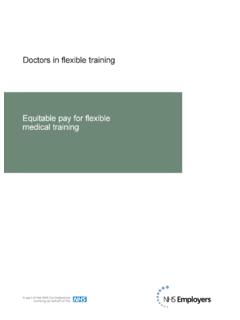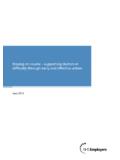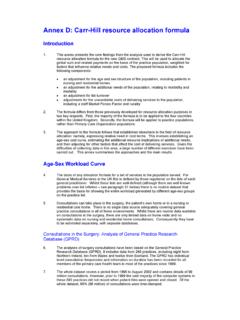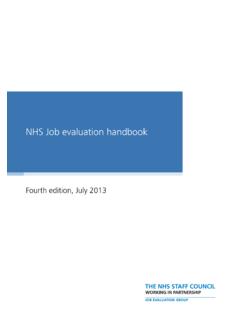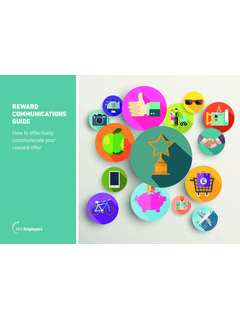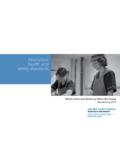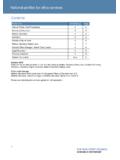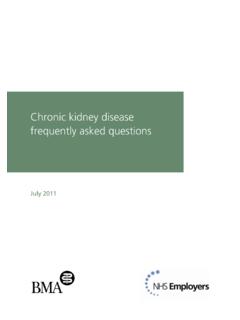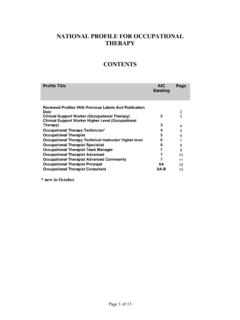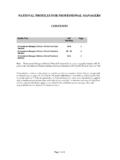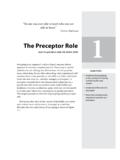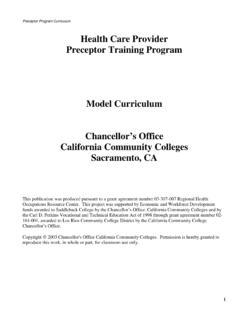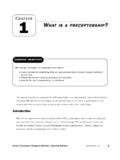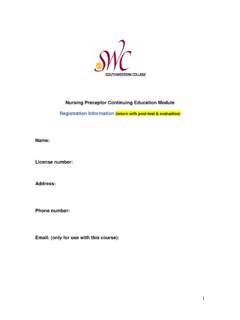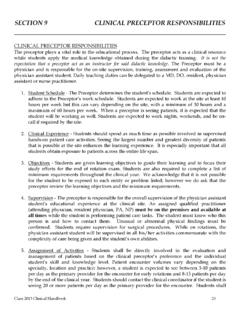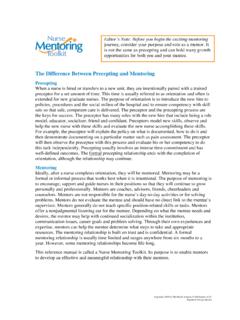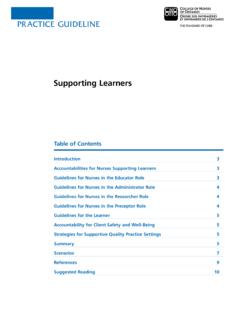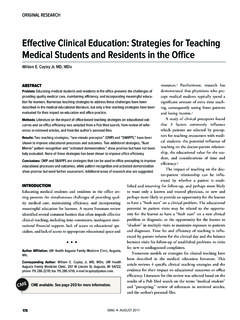Transcription of Newly Qualified Paramedic (NQP) - NHS Employers
1 1 NQP Portfolio February 2017 Newly Qualified Paramedic (NQP) Consolidation Period Framework1 1 Source: Collaborative Newly Qualified Paramedic Summit, Bristol. (2016) and the National Education Network for Ambulance Services (NENAS) (2016) 2 NQP Portfolio February 2017 NQP Name: Payroll/ESR Number: Agreed submission date Base: Contact details: 3 NQP Portfolio February 2017 If found, please return to: Name Contact phone Contact email Contact address / Base station Employer contact: 4 NQP Portfolio February 2017 Table of Contents: Page 1.
2 Preface 6 2. Introduction 7 3. Role of the Practice Educator 7 4. Structure of the consolidation period 10 5. Record of progress meetings 14 6. Consolidation Learning Outcomes (CLOs) 16 SECTION A: Clinical 16 SECTION B: Professional Practice 20 SECTION C: Continued Professional Development 26 SECTION D: Leadership 28 SECTION E: Practice Based Education (Mentoring) 30 SECTION F.
3 Wellbeing and resilience 32 Consolidation Outcomes Framework 5 NQP Portfolio February 2017 SECTION G: Reflective practice 34 7. Guidance: Portfolio of Evidence 36 a) Example of how to complete evidence for consolidation 36 b) Example Clinical Learning Diary 38 c) Professional Development Record and Certificates 39 d) Reflective case studies 40 8.
4 List of Signatures 40 6 NQP Portfolio February 2017 The Paramedic profession has developed rapidly since registration was first introduced by statute in 2001. As the Paramedic scope of practice has expanded and adapted to changing patient presentations, so has Paramedic pre-registration education. Today s paramedics will register via Diploma or Degree level education. But it is widely recognised that learning does not end at registration and that in some ways this is the point at which becoming an autonomous professional really starts.
5 Experiential learning is a vital component of Paramedic practice and the point at which a new Paramedic starts their career as a new professional is also a stage through which they should be well supported in practice and where they can begin to demonstrate the range of knowledge and skills that comes with their new status and with increasing confidence. For this reason, the English NHS ambulance trusts, national staff side representatives, College of Paramedics and other key stakeholders came together during October 2016 to devise a two-year consolidation period, as part of the national agreement, which will support new registrants to deliver the scope of practice that contemporary out of hospital emergency healthcare demands.
6 The following framework contains nationally agreed learning outcomes, which must be evidenced by Newly registered paramedics in order to progress through the consolidation period. It is aimed at enabling new paramedics to demonstrate increasing competence and confidence. Support for use of a portfolio and its completion will be provided locally by Trusts, specifically by their learning and development, practice development and operational teams. Individual employing organisations will decide how best to implement it and how best to support their new paramedics.
7 Both the theoretical and practical aspects of the consolidation period will be assessed. In addition to the achievement of specified learning outcomes, competence will also be determined through consolidation in clinical practice. Upon successful completion it is envisaged that paramedics moving into Agenda for Change Pay Band 6 will be autonomous within their scope of professional practice. All paramedics will be expected to maintain a reflective approach to their learning and practice and to monitor this using an appropriate framework both during and after the consolidation period.
8 1. PREFACE 7 NQP Portfolio February 2017 Newly Qualified Paramedics (NQPs) will frequently be the first point of contact for service users who present with a wide range of emergency and unscheduled health problems. This framework will evidence autonomous decision-making based on sound clinical judgment, to complete episodes of care in a range of settings when it is safe and appropriate to do so and to manage referrals appropriately when it is not. The aim is to support NQPs to provide evidence of their journey as a Paramedic , from being new registrants to growing into confident and capable professionals.
9 Evidence of this journey will include the use of continuous learning, reflection and self-audit. During consolidation, NQPs should be encouraged to seek help, advice and information at any stage while they consolidate their learning and when they are unsure. By the end of the consolidation period paramedics should be established and verified in the workplace as competent, safe and effective professionals. NQPs must be supported by a designated Practice Educator. This person will help them to consolidate their foundation as new professionals.
10 Newly Qualified Paramedics: Educational Development. During the twenty-four-month consolidation period the NQP will be a preceptee and will be supported by a designated preceptor, who will help them to consolidate their foundation as new professionals. Practice Educators and Preceptors are two roles that support learning and development in the practice setting. It is acknowledged that there are certain overlaps between the two, for example the attributes of appropriate personnel who support learning. But there are also key differences between the role of a practice educator and a preceptor, and it is important that these differences are highlighted so that practice educators, preceptors and learners are clear about their role.
